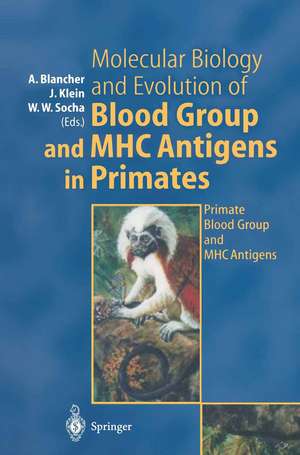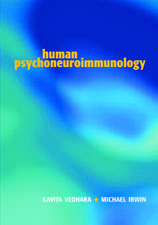Molecular Biology and Evolution of Blood Group and MHC Antigens in Primates
Editat de Antoine Blancher, Jan Klein, Wladyslaw W. Sochaen Limba Engleză Paperback – 21 ian 2013
Preț: 384.65 lei
Preț vechi: 404.89 lei
-5% Nou
Puncte Express: 577
Preț estimativ în valută:
73.60€ • 76.85$ • 60.78£
73.60€ • 76.85$ • 60.78£
Carte tipărită la comandă
Livrare economică 15-29 aprilie
Preluare comenzi: 021 569.72.76
Specificații
ISBN-13: 9783642638435
ISBN-10: 3642638430
Pagini: 588
Ilustrații: XIV, 570 p. 117 illus., 1 illus. in color.
Dimensiuni: 155 x 235 x 31 mm
Greutate: 0.81 kg
Ediția:Softcover reprint of the original 1st ed. 1997
Editura: Springer Berlin, Heidelberg
Colecția Springer
Locul publicării:Berlin, Heidelberg, Germany
ISBN-10: 3642638430
Pagini: 588
Ilustrații: XIV, 570 p. 117 illus., 1 illus. in color.
Dimensiuni: 155 x 235 x 31 mm
Greutate: 0.81 kg
Ediția:Softcover reprint of the original 1st ed. 1997
Editura: Springer Berlin, Heidelberg
Colecția Springer
Locul publicării:Berlin, Heidelberg, Germany
Public țintă
ResearchCuprins
I Taxonomy and Phylogeny of Primates.- 1 Taxonomy and Phylogeny of Primates.- II Red Blood Cell Antigens.- 1 Introduction.- 2 The ABO, Hh and Lewis Blood Group in Humans and Nonhuman Primates.- 3 The MNSs Blood Group System Serology and Formal Genetics.- Molecular Biology of Glycophorins in Humans and Nonhuman Primates.- 4 The Rhesus System.- 5 The Duffy Blood Group System and Its Extensions in Nonhuman Primates.- 6 The ?-Galactosyl Epitope (Gal?1-3Gal?1-4G1cNAc-R) and the Natural Anti-Gal Antibody.- 7 Simian-Type Blood Groups of Nonhuman Primates.- 8 Blood Group Antigens as Receptors for Pathogens.- 9 Evolution of Blood Group Antigen Polymorphism.- III Major Histocompatibility.- 1 Geography and History of the Genes in the Human MHC: Can We Predict MHC Organization in Nonhuman Primates?.- 2 Class I Genes in Nonhuman Primates.- 3 Mhc Class II Genes of Nonhuman Primates The DR Loci.- Evolution of Length Variation in the Primate Mhc-DR Subregion.- The DQ Loci.- Nonhuman Primate Mhc-DP Genes.- The DM and DN/DO Loci.- 4 The Primate Class III Major Histocompatibility Complex Region Encoding Complement Components and Other Genes.- 5 Mhc Genes, Immune Response, and Vaccines.- 6 MHC and Disease Associations in Nonhuman Primates.- 7 Nonhuman Primate MHC Class I Sequences, 1997.- 8 Nonhuman Primate MHC Class II Sequences: A Compilation.- 9 Nomenclature for the Major Histocompatibility Complexes and Alleles of Different Nonhuman Primate Species.
Recenzii
"The extensive list of references, MHC nucleotide sequences of nonhuman primates, and numerous tables and figures make this a valuable handbook for experts in the field of nonhuman primates. It also provides a comprehensive review of human blood and MHC antigens for clinicians in the fields of hematology, transplantation and transfusion medicine." International Journal of Hematology
Textul de pe ultima copertă
The book provides up-to-date summaries on the main systems of blood group antigens and MHC molecules in nonhuman primates. For each system, the human antigens are described and used as a reference for comparison with their counterparts in apes and monkeys. The emphasis is on the molecular structure of the gene products, the evolutionary pathways and presumed mechanisms by which the systems have evolved. All articles are written in such a way that they can serve as an introduction to the field for nonexperts and, at the same time, as a handbook for experts. Numerous tables, diagrams, and figures provide overviews of antigen structures and their distribution in different species and evolutionary relationships. Extensive reference lists guide the reader through the literature on each topic.









